Forget fabric and stitches, think about a 3D printed dress adorned with embedded proximity and respiration sensors, wireless bio-signals connected to an Intel Edison platform and microcontrollers.
Dutch FashionTech designer Anouk Wipprecht brings the garment and the wearer together thanks to an electronic couture with a futurist twist. Thirty-two-year-old currently living in New York, since the early 2000s she has been working on wearables, combining fashion design with engineering, robotics, science and interaction-user experience.
We met Anouk during the Fashion Week of Milan, where tonight she is going to give a lecture at Meet The Media Guru, the Italian platform that invites innovators from all over the world to share their ideas and projects (you can follow the event online). We talked about smart fabrics and accessories that can listen to our body, therapeutic fashion and the future of dressmaking.
My robots are modeled after animalistic instincts
Can you imagine a dress able to sense your fear when someone approaches you too aggressively and defend you with a set of robotic limbs? This garment already exists, it is called Spider Dress.
“I research space: the intimate, the social and the public. And I find inspiration in biomimicry; in nature, animals and their behavior. Animals are irrational and unpredictable, I look at how they behave, socialize and interact. Humans are rational, we learn how to react in certain ways, animals don't”.
For instance, her Spider Dress senses the surroundings and attacks when the personal space is invaded, or her Sensoric Smoke Dress, based on the octopus, it releases smoke to escape and hide.
“Often our notion of a robot is modeled after a human, my robots are modeled after animalistic instincts and are placed on the body. It’s an intuitive interface. This way the design and the interaction with it become understandable. A nature-inspired design is self-explanatory. It’s important for me that people without technological knowledge are able to understand the design, because I work a lot with children”.
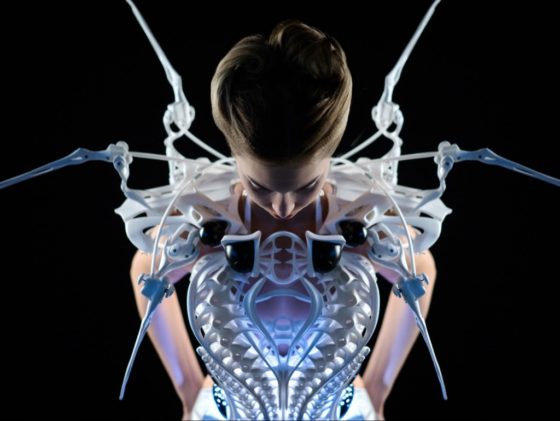 Spider dress by Anouk Wipprecht.
Spider dress by Anouk Wipprecht.
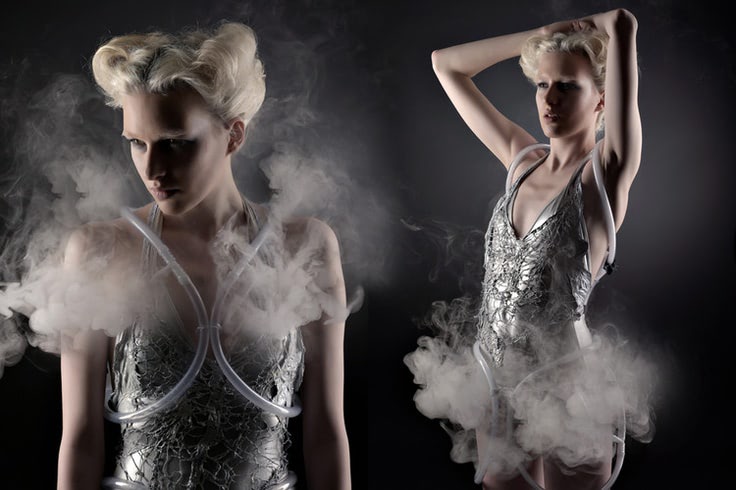 Sensoric Smoke "Octopus" Dress by Anouk Wipprecht.
Sensoric Smoke "Octopus" Dress by Anouk Wipprecht.
In fact, one of Anouk’s latest creations is a connected unicorn horn designed to help children with autism learn how their brains work, to handle situations that make them uncomfortable. Equipped with electrodes to measure brain signal and a camera to record trigger events, the unicorn horn is an example of an empowering innovation.
“I use the playful aspect of the unicorn to make the younger wearers feel more comfortable. This allows me to collect genuine data, only achievable when the kids are themselves, outside from a medical setting. A technology that can listen to the body can predict diseases and reduce anxiousness, but I also look at how it can be fun and expressive. I’m interested in non-verbal communication, fashion triggers imagination and can help people with autism, dementia or depression”.
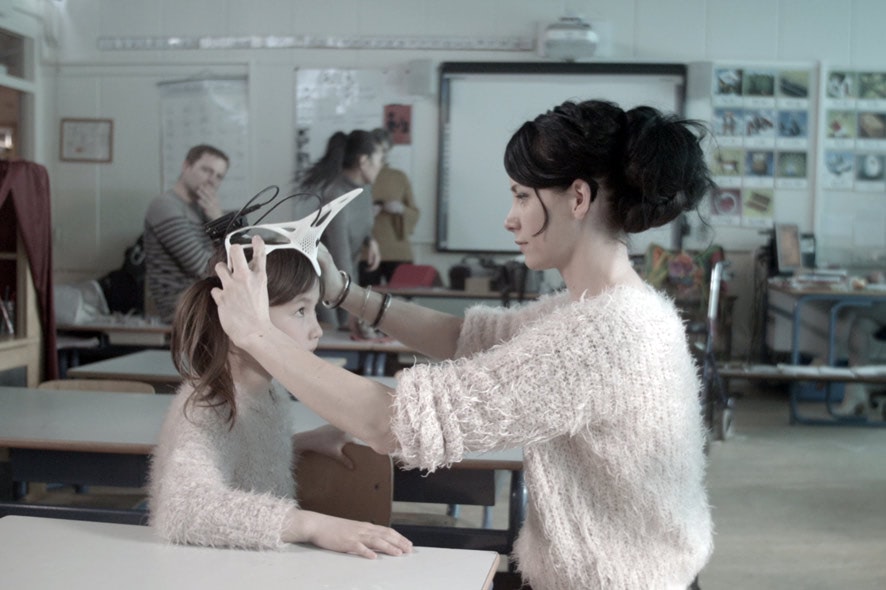 Anouk Wipprecht fitting the bio-sensing unicorn wearable headset on a girl.
Anouk Wipprecht fitting the bio-sensing unicorn wearable headset on a girl.
Anouk’s plan for the future is to continue exploring the potential of learning systems and therapeutic fashion.
“I want to design garments that help people with the use of technology, instead of overwhelming them. In the future I’d like to continue working in wellness and health, to make an impact, something very practical. Like the project I did with Viktoria Modesta”.
Viktoria Modesta is a bionic pop artist. Following medical complications at birth, she lost her left leg. Anouk’s project Smokification is an accelerometer-based prosthetic leg equipped with electronics that intuitively steers Viktoria’s movements while she interfaces with the world around her using a facade of smoke.
“Viktoria Modesta turned disability into a cool thing, instead of being ashamed of it or hiding it. She became a model for the amputee community and gave other people empowerment”. Anouk is working with Viktoria on using her prosthetic leg as a gesture-based digital musical instrument.
 Viktoria Modesta wearing the prosthetic leg designed by Anouk Wipprecht.
Viktoria Modesta wearing the prosthetic leg designed by Anouk Wipprecht.
“Fashion to me is an expresser and I want to make it digital, electronic and interactive, not just analogue. In the last three years the fashion industry started investing more in technology, but I think fashion industry and technology still need to talk more with each other, in order to make fashion-tech more producible”.
When developing smart items of clothing outfitted with sensors, the designer runs into typical issues like how to wash, maintain and power them. To make the wearable commercially viable, those matters will hafve to be solved.
“The main problems of wearables are: washability, energizing and maintenance. Our household will need to change and adapt to a technological closet. I envision a new figure, the robotic dressmaker, a modern tailor able to fix a garment every time there is something wrong with the embedded electronics”.
How can technology help us again?
“I try to envision how technology can move away from being the overwhelming force it is today so it can help us again. My designs ask: when and if technology is living on the body, what does it do? And how can it be interesting? Does technology still help us? How can it be an interface and express something? How can it help us doing things we cannot do ourselves, like defend, showcase things and create connectivity? That is my interest, to find the extra capability fashion can give to the body, in order to enhance communication”.
Anouk is currently collaborating with jewelry brand Swarovski to commercialize a necklace with a crystal pendant able to measure heart rate. “I wanted to make something meaningful, I made the crystal smart giving it a breath and a heartbeat”. The necklace is expected to be available on the market in the spring of next year.
“Turning this into a product will show the wearer heartbeat, this is poetic and useful but I like it especially for its provocative side. By showing the heart rate, the necklace will reveal emotions. It will give other people the knowledge of what is going on in the wearer’s body. So this device can also create uncomfortable situations. I’m interested in the dialogue I’m creating thanks to the devices”.
I design a technology that can listen to the body
If the majority of Anouk’s projects position the body as an interface, other works regard the body as a site for interactivity and exchange, like her Cocktail Dress, a playful take on the bartender. “It’s an electronic dress that serves cocktails. I designed it for the Cirque du Soleil, they asked me to make something for their nightclub in Las Vegas and their restaurant in Ibiza. In this project the technology aspect is merely fun”.
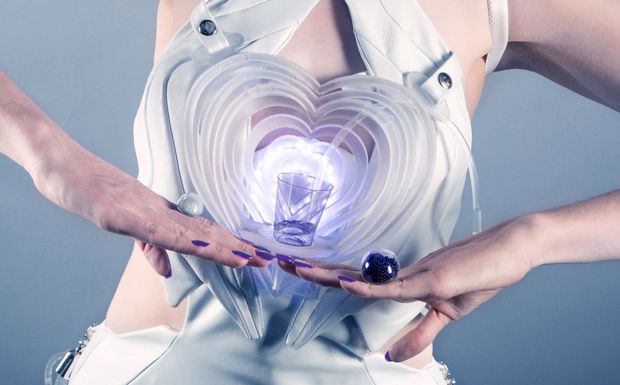 Anouk Wipprecht's Cocktail Dress.
Anouk Wipprecht's Cocktail Dress.
The Cocktail Dress, as well as most of Anouk’s works are open source: “Wearables, especially the ones related to health and wellness, should be available to everyone, not just to people with economic means”. She provides step-by-step instructions to allow everyone to replicate her models.
“Knowledge sharing, inspiring, collaboration and community are very important topics for me. Everybody should be able to learn, so I contribute by making my work open source and teaching young people how to program”.
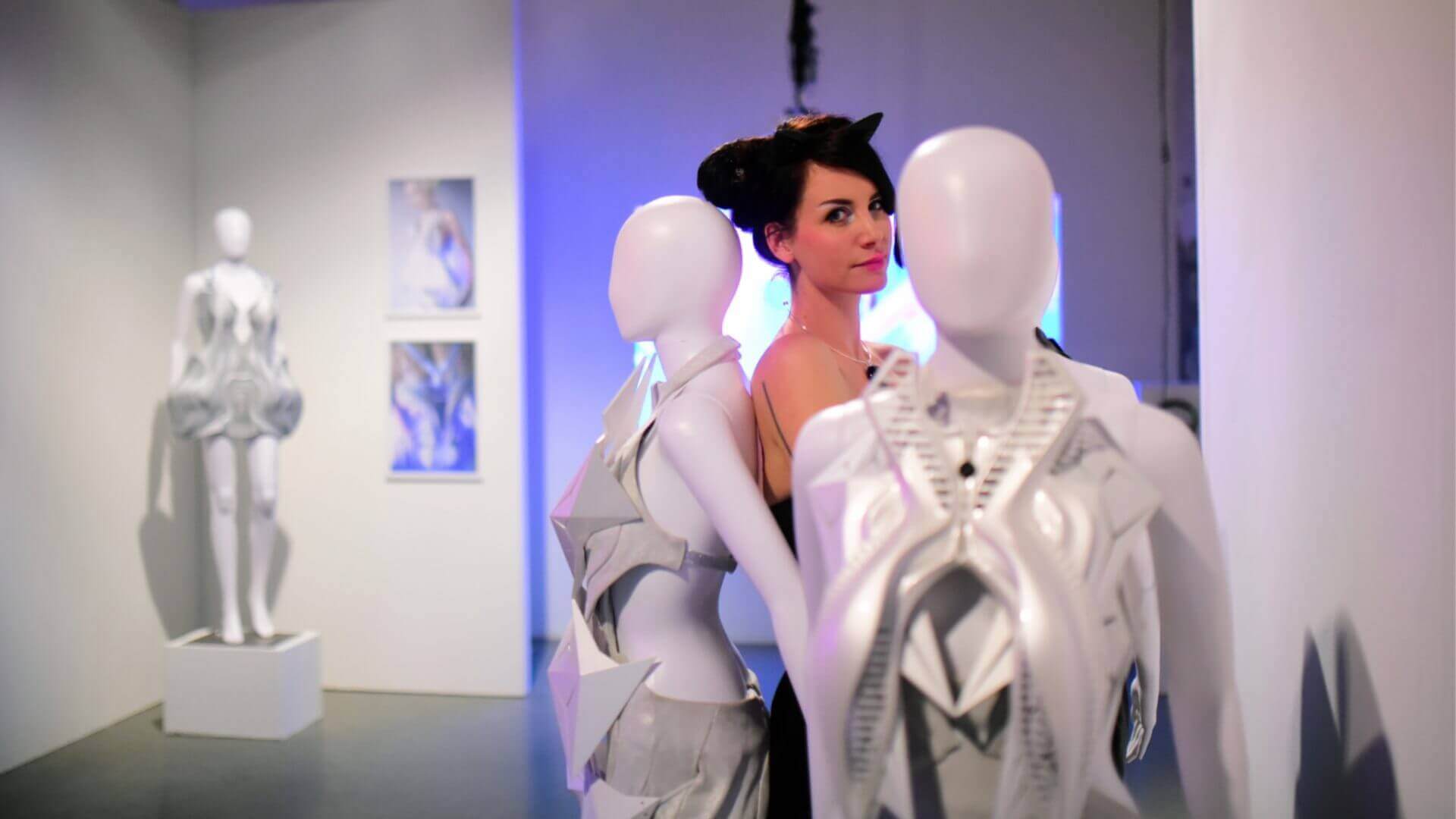
Share your thoughts and join the technology debate!
Be the first to comment